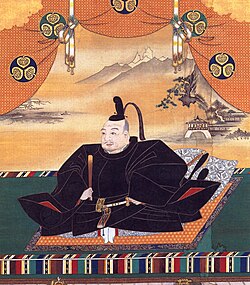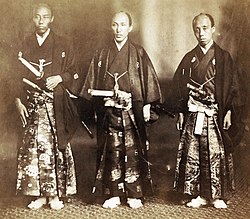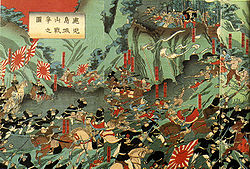 | |
Japan | United States |
|---|---|
| Diplomatic mission | |
| Embassy of Japan, Washington, D.C. | Embassy of the United States, Tokyo |
| Envoy | |
| Japanese Ambassador to the United States Shigeo Yamada (since 24 October 2023) | United States Ambassador to Japan Rahm Emanuel (since 25 March 2022) |
Japan and the United States have held formal international relations since the mid-19th century. The first encounter between the two countries to be recorded in official documents occurred in 1791 when the Lady Washington became the first American ship to visit Japan in an unsuccessful attempt to sell sea otter pelts. In the 1850s, Japanese ports were opened to American trade for the first time after the Perry Expedition, led by naval officer Commodore Matthew C. Perry, arrived in Japan with a fleet of four Black Ships. In July 1856, Townsend Harris became the first American diplomat to Japan, and in 1858, the Treaty of Amity and Commerce, also known as the Harris Treaty, further expanded trade relations and established permanent consulates. The first Japanese Embassy to the United States set sail for San Francisco in 1860, marking diplomatic engagement between the two nations.
Contents
The early 20th century saw Japan and the United States become allies during World War I, and diplomatic interactions continued. However, tensions arose in the lead-up to World War II following the Japanese invasion of Manchuria, which ultimately resulted in Japan's attack on Pearl Harbor in 1941 and the United States' entry into the war. Following Japan's surrender in 1945, the relationship shifted towards a post-war partnership. Japan was occupied until 1952 when the Treaty of San Francisco came into effect. Japan–United States relations continued to evolve throughout the Cold War and into the 21st century, with periods of cooperation and occasional trade disputes. The two nations maintain strong economic ties, and Japan is a crucial ally of the United States in Asia.






